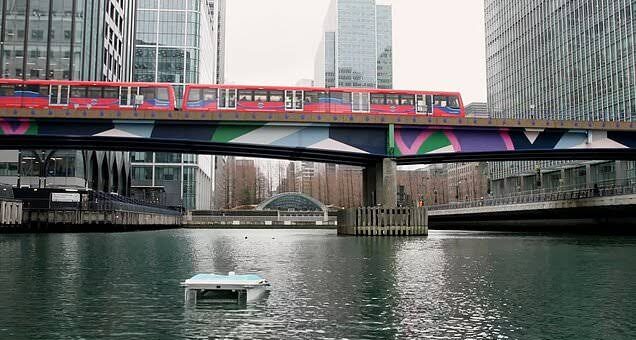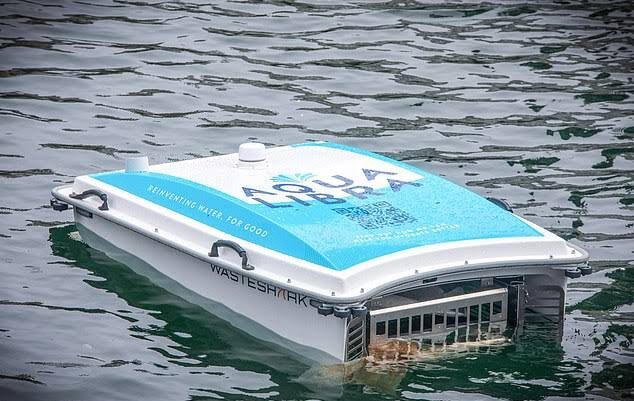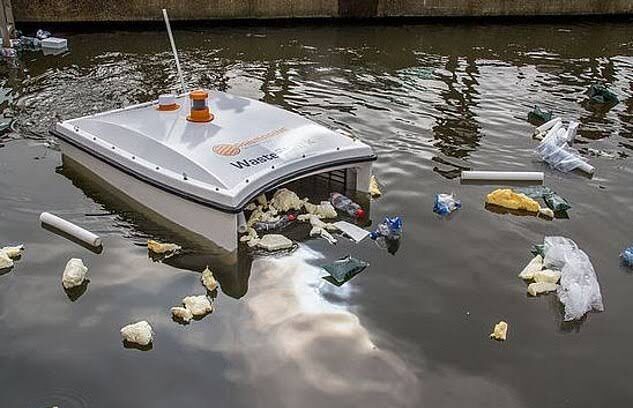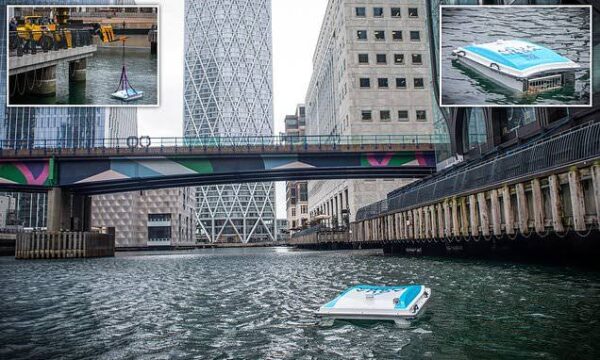There is a new shark in the water, but this one wants to pick up trash rather than eat fish, therefore I want to lessen the amount of plastic pollution in the River Thames. Canary Wharf’s middle pier is being patrolled by a hungry robotic shark to remove plastic pollution from the water. You’ll learn everything in our upcoming report. a robotic shark with a daily consumption capacity of up to 22700 plastic bottles. It has been set free in the docklands of London. The River Thames has to be cleaned up and its plastic pollution removed. The trash shark electric catamaran, powered by batteries, has a five-kilometer range before requiring recharging. As it moves through the water, it can gather up to 500 kg of plastic and other contaminants.

After the waste is collected, it is recycled and given a second life as furniture, building materials, packing material, bags, and other goods. The Thames, which flows across Southern England for about 346 kilometres, is the second-longest river in the United Kingdom. According to reports, the Thames’ tidal section is home to 125 different kinds of fish, but over time, pollution has emerged as one of the biggest dangers to the river’s ecology. According to many studies, the Thames has some of the highest concentrations of microplastics of any river in the world. WetVibes, plastic cups, bottle caps, and plastic takeaway containers are among the various debris found in the River. On March 18, the day before World Recycling Day, the robot was put into service.

It will last for at least three months in the local rivers. It will also keep an eye on the water’s quality to spot any potential impurities that could damage the aquatic ecology. The bot has more than 15 distinct sensors that it can use to monitor things like temperature, depth, dissolved oxygen, turbidity, blue-green algae, and crude and refined oils. The bot then transmits the time- and location-stamped data to the associated software centre for examination. The idea behind water shock originated with the Dutch company run Marine. The autonomous robot has an on-board lidar that can detect surrounding objects using laser beams, similar to a self-driving automobile. Its two electric thrusters, which assist it manoeuvre in the water, help it weigh 75 kg. It is slower than the whale shark it was modelled after, reaching a top speed of 3 kilometres per hour.

The bot was created to offer daily upkeep in local waterways that larger rubbish collecting vehicles can’t. According to Rand Marine, big-scale solutions take an excessive amount of time to deploy since they must wait for large areas of trash chokeholds to form. This, according to the business, causes a lot of the garbage to fall to the bottom and become irretrievable. The garbage shock can catch floating plastics in the meantime before they become a persistent annoyance. Waste shocks can be purchased for approximately 20,000 pounds, or $24,600. Equipment may also be leased for about 1000 pounds per month, or $132. They might serve as an adequate line of defence for our rivers.
ALSO READ THIS : Time To Go Green | EU accepts 2035 deadline for e-fuel exemption

